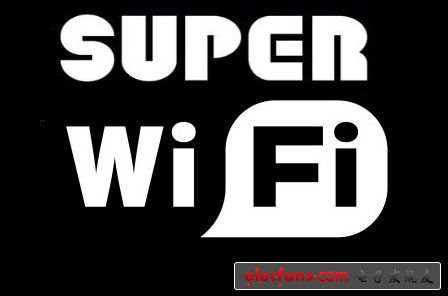According to US media reports on the 3rd, the United States is preparing to actively deploy "Super Wi-Fi" (Super Wi-Fi), which has a wider spread than Wi-Fi (wireless high-definition) hotspots and has many advantages that Wi-Fi does not have. . Countries such as the United Kingdom and Brazil also expressed strong interest. In fact, Super Wi-Fi uses different frequencies than Wi-Fi, and requires specially designed equipment. Its name comes from the Federal Communications Commission (FCC) in 2010, the idle broadband TV spectrum "white space" (white space) (white space), wireless broadband network use, and named it Super Wi-Fi. Caraboth, the director of the New America Foundation ’s future wireless network, said: “Wi-Fi has flourished, but it is limited by frequency, and the signal range is only a few hundred meters. In comparison, TV frequency has a wide signal range and low power, and It can penetrate the restrictions of buildings and trees and bad weather. " Super Wi-Fi's wide-band spectrum spreads far greater than wireless networks, which can theoretically reach 100 miles (160 kilometers), but due to certain factors, the actual signal range can reach several miles. Sparsely populated rural areas lack broadband, and Super Wi-Fi will provide high-speed networks. Consumers can also establish their own hotspots and use devices outside their homes to spread signals. A consortium of several organizations has announced that it will begin setting up super Wi-Fi on campuses in rural areas early next year. This project, called AIR.U, is also supported by Google and Microsoft. The spectrum used by Super Wi-Fi does not need to be licensed. Like Wi-Fi, companies do not need to bid for exclusive use rights, which helps reduce costs. Mobile communication companies can emulate the use of wireless networks and use Super Wi-Fi to alleviate some of the spectrum shortages caused by the explosion of mobile electronic devices such as smartphones and tablets. Lubo, a spokesman for the WhiteSpace Alliance that promotes Super Wi-Fi technology, said that Super Wi-Fi is gradually developing in the United States and other countries, and a major breakthrough is expected by the middle of next year. Chip maker Texas Instruments (TI) recently joined the association, and display device manufacturers are preparing to start producing Super Wi-Fi devices. However, MobileTrax analyst and consultant Pudi said that it takes a long time to build a super Wi-Fi chipset and establish software standards, and the expectations of the outside world may be too high. Portable Energy Storage For Camping Global Portable Power Station Market (2021 to 2026) - Advancing Lithium-Ion Technology is Likely to Make Portable Power Stations More Affordable Presents Opportunities Solar Power Bank For Camping,Best Power Station For Camping,Best Camping Power Station,Solar Battery Camping Shenzhen Zhifu New Energy Co., Ltd. , https://www.sunbeambattery.com
"Portable Power Station Market by Power Source (Direct, Hybrid), Technology (Lithium-ion, Sealed Lead-Acid), Capacity (0-100, 100-200, 200-400, 400-1000, 1000-1500, =1500Wh), Sales Channel (Online, Offline), Application, Region - Global Forecast to 2026" report has been added to ResearchAndMarkets.com's offering.
The global portable power station market size is projected to reach USD 494 million by 2026 from an estimated USD 358 million in 2021, at a CAGR of 6.7% during the forecast period.
By technology type, lithium-ion is expected to dominate the portable power station market.
The lithium-ion segment is estimated to hold a larger share of the market during the forecast period. The anticipated growth of this segment is attributed to the availability of lithium-ion at affordable prices for portable power station operations in regions such as North America, Europe, and Asia Pacific. The demand for lithium-ion technology is driven further by reduced operational costs for customers.